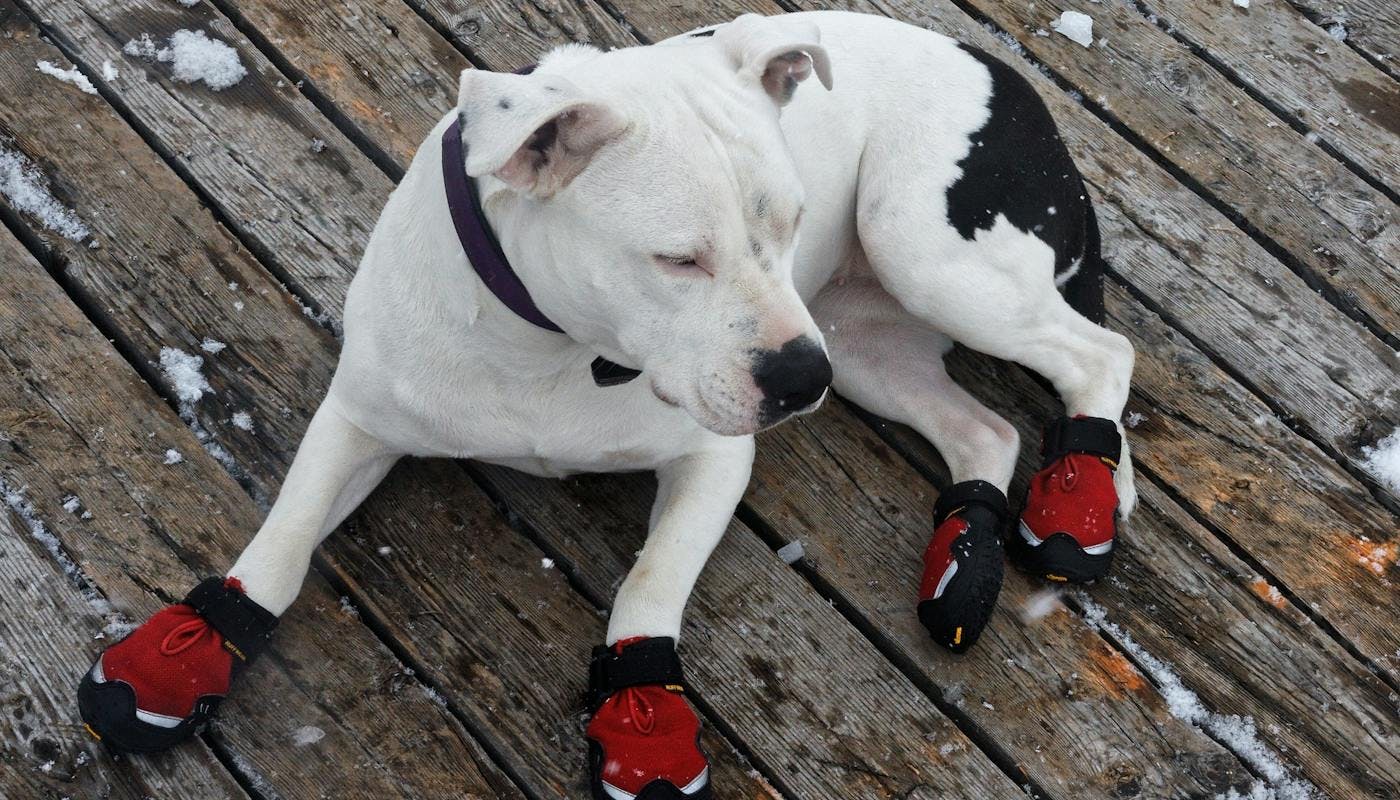Are Dog Boots Necessary?
Dog boots. Fashion accessory or canine necessity? Although some experts are vehemently against dog boots, there is plenty of evidence that they can be beneficial for dogs under certain conditions. So if you love mountain-climbing, live in a cold climate, or you’ve noticed cracks in your dog’s paws – read on!
Does Your Dog Need Boots?
If you’ve ever chuckled at a dog in the park who is kitted out in winter coat and boots – while admiring your own hound, as naked as nature intended – you probably believe that you’d never buy dog boots.
If, on the other hand, you’ve ever seen your dog uncomfortable with a grass seed, a cut, or a wedge of ice in their paw, you might take the opinion that dog boots are necessary.
For some dogs, boots can protect paws against hard wintry ground, mountain terrain, and hot summer sidewalks. But while it’s true that paws can be affected by trauma and environmental conditions, some vets have weighed in saying that dog boots are unnecessary, uncomfortable, and even cruel.
Your decision should come down to your own dog: their lifestyle, personality and preferences. Here are some reasons to consider giving them a try.
Why Do Dogs Need Boots?
Dogs don’t technically need boots. They have evolved as companion animals and have spent many centuries walking alongside humans. Their feet have adapted to conditions as the human race built roads and began to conquer mountains. In fact, dog feet are truly amazing!
But there are some dogs – and some places – whose owners might start to ponder or Google: “Does my dog need boots?” Well, don’t be too quick to dismiss the daft-looking dog-boot. Dogs can benefit from boots to protect them against:
Cold winters
Take a look at your dog’s feet. Are their paw pads cracked? Some dogs experience cracks in their paws during very cold conditions. If your dog picks up their feet while outside, that’s another sign that they might need boots. Sometimes ice sticks to paws or forms hard little wedges between their toes. It can become extremely uncomfortable for your dog.
Hot pavements
If you live in a place with hot summer conditions, this is another reason to consider boots for your dog. Our sidewalks can become extremely hot when the sun is beating down on them. An air temp of 77 F could produce a ground temperature of 125 F, and that’s enough to burn your dog’s paws.
De-icer chemicals
If the sidewalks are being treated with chemicals or salt to melt ice and snow, be wary of letting your dog walk on them. It can be harmful to dogs, especially if they come indoors and lick their paws later.
Toe or foot injuries
Dog boots may also be recommended for dogs who have injured one or more feet and need to limit movement while they heal. To secure the toes, you can use socks inside the boots. Boots are sometimes used by dogs who accompany their owners mountain-hiking! And we’ve even seen them used by elderly dogs who find the wooden floors in their homes slippery.
Does My Dog Need A Coat?
While dog coats might seem vain or indulgent, there’s no denying their function. If you live in an area which gets lots of snow and your dog is young or less active than they used to be, a coat can be beneficial. Small dogs (like dachshunds) who are lower to the ground feel the cold quickly, and dogs with fine or thin coats might start to shiver too. That’s when you know you should try out a coat. Choose something lightweight and quick-drying.
Protecting Your Dog’s Feet
If you choose to try dog boots, it’s really important to make sure they fit. If you can get advice from an expert, jump at the opportunity. There are now specialist boots designed for greyhounds, mountaineers, or swimmers. Do you want non-slip, waterproof, or reflective styles? Spend some time researching the boots before you attempt to fit them on your dog.
Uncomfortable or heavy boots will cause distress to your dog: that’s the reason some vets disapprove of them. If you wind up with boots that slip off, pinch the feet, or feel heavy, your dog will hate them – and probably feel pretty grumpy about you, too.
So if you really don’t want to put your dog into boots, there are some other ideas that you could try.
Start by getting your dog’s paw-fur clipped. You might be able to do this yourself! Long fur growing between toes tends to gather ice and hasten those hard little ice-wedges.
Another suggestion is to apply a light coating of petroleum jelly to your dog’s paws. It’s like lip balm – providing a layer of protection against the harsh climate – and prevents their paws from being repeatedly wet and cold, which should reduce cracking.
